Hello blog! It’s been a while!
I returned home to America in mid-December and am now back in the flow of things in Japan. The America trip recap (and my moments of readjustment, like bowing at a car that let me cross the street on my first day) will come in another post. For now, I wanted to share about a recent long weekend I spent with some friends in Ishigaki (石垣), one of the islands of Okinawa (沖縄). Hopefully this will be the first post of twelve this year!
Two dear friends of mine, Tom and Bun, are unfortunately headed home to the UK after a year here. We met たまたま (tama tama, or by chance/randomly) on a night out almost exactly a year ago. At the end of last year, they floated the idea of a trip to Okinawa, but my being in New York for the holiday season and in an opposite time zone made planning the details difficult. We went into the weekend with an Airbnb and car reservation and a few ideas of what to do. Planning a trip in that way, or rather, not planning much at all, can really be a true testament to the strength of the friendship. Am I worried about being on a small island with these friends with no real plan? Ideally the answer is no…
We headed to Ishigaki Island early on the first flight out of Osaka. By 10 am, the three of us had a rental car and were on the beach sifting through the sand looking for coral and shells. We headed back to the airport to pick up Olivia, completing our quartet for the trip. Olivia moved from Osaka to Tokyo back in the fall, so we spent our first meal giddily catching up over a local specialty food, Okinawa soba. We picked a crowded lunch spot, but lucked out and had our own tatami mat room with windows letting in the warm island breeze. ‘Aaaaahhhh,’ a unanimous sigh was let out. We were all happy to be together and have a break from the frigid cold of mainland Japan.
Okinawa soba differs from typical Japanese soba in most ways possible. The noodles are made with wheat flour and the broth from pork bones and bonito, while traditional soba uses buckwheat flour (although most varieties you find at the supermarket now mix buckwheat and wheat flour… you have to keep an eye out for the good stuff!) and kelp or mushrooms for a lighter broth. Okinawa soba feels heavier, more similar to a bowl of ramen. The dish is also one of many through which the greater history of Okinawa can be traced. The wheat noodles made their way to Okinawa from China, which is closer in proximity than mainland Japan. This culinary exchange dates back to the early 16th century, when Okinawa was the Ryukyu Kingdom (琉球列島), an independent ruling monarchy of the Ryukyu people, the ethnic group indigenous to the islands. The dish was first served in the court and became popular amongst affluent traders, but its status drastically changed as a result of the wars waged in the region. In the 1870s, the kingdom was annexed by the Meiji Empire, then later occupied by the US for almost 30 years after WWII. With each of these abrasive shifts, the dish’s standing lowered, and, due to post-war mass food shortages, it became a staple that even lower-class people had access to. Flour was still available by way of the American occupation, and soba shops steadily reopened after the devastation of the war.
After washing down our noodles with local Sanpincha, Okinawan jasmine tea, we headed off for our first full day of exploring. Our first stop was for some coffee at Volts Coffee, which had specialty espresso drinks mixed with citrus juice from the islands. I was a fan, but the reviews amongst our crowd were mixed. The coffee shop itself was very funky, and while looking at the cool flyers on the wall for local events, I remember saying, ‘Should I move here?’ ‘It was only a matter of time before someone said that,’ Tom remarked. True…
Having a car gave us full mobility to scout out the whole island. We spent the afternoon driving around, enjoying the lush scenery, and walking up a steep hill to an observatory with beautiful views of the blue and green sea. A game we played was to name every color we thought appropriate to describe the sea that surrounded us. Emerald, aqua, turquoise, royal blue, seafoam, teal, baby blue, sky blue… the list grew longer and longer. Somehow at the observatory, the topic of special talents came up, and I quickly found myself upside down in headstand formation at the top of the lookout. I guess that is my special talent? We had a quick headstand lesson, holding up each other's legs into the breeze while families of tourists looked at us puzzledly. We had one family take our photo and in return we took theirs. We saw them again that afternoon at a public beach where we spent some time relaxing. I think we saw them even a third time, but I can’t exactly remember where.
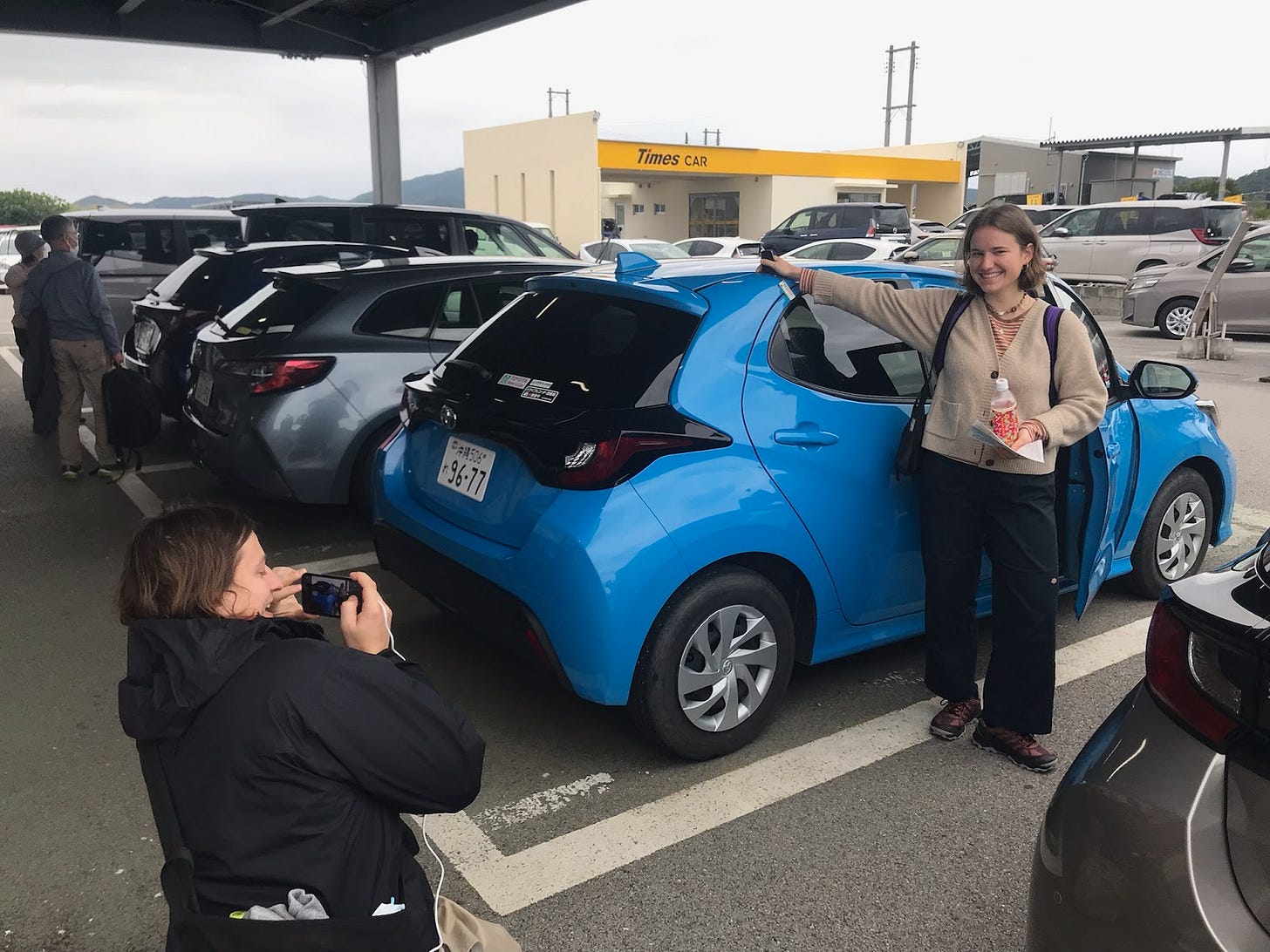
Another fun activity was going on a glass bottom boat tour in Kabira Bay. The water is some of the clearest I’ve ever seen, and we spotted all sorts of tropical fish and creatures living amongst the coral reefs. My favorite was seeing rows of giant clams about the size of basketballs that contract and expand under the water. We also saw a turtle. ‘Kame! Kame!!’ the kids on the boat screamed the Japanese name.
Lunch after the boat tour and resting on the beach for a bit was at a little food stand that served more Okinawan favorites — spare rib rice bowls, more soba, and taco rice (can you guess the culinary history of this one?). Other delicious island foods we made sure to try during our trip were tempura Mozuku (a fried type of algae that tastes like a fried mushroom), Goya Chanpuru (stir fried bitter melon with tofu and veggies), Umi Budo (a type of popping seaweed in the shape of grapes, hence the name ‘sea grapes’), and plenty of variations of Beni Imo, bright purple sweet potato grown on the islands. We ate it sliced and fried in tempura batter, as a mash like mashed potatoes, in potato chip form, and most deliciously, in pastel purple soft serve ice cream.
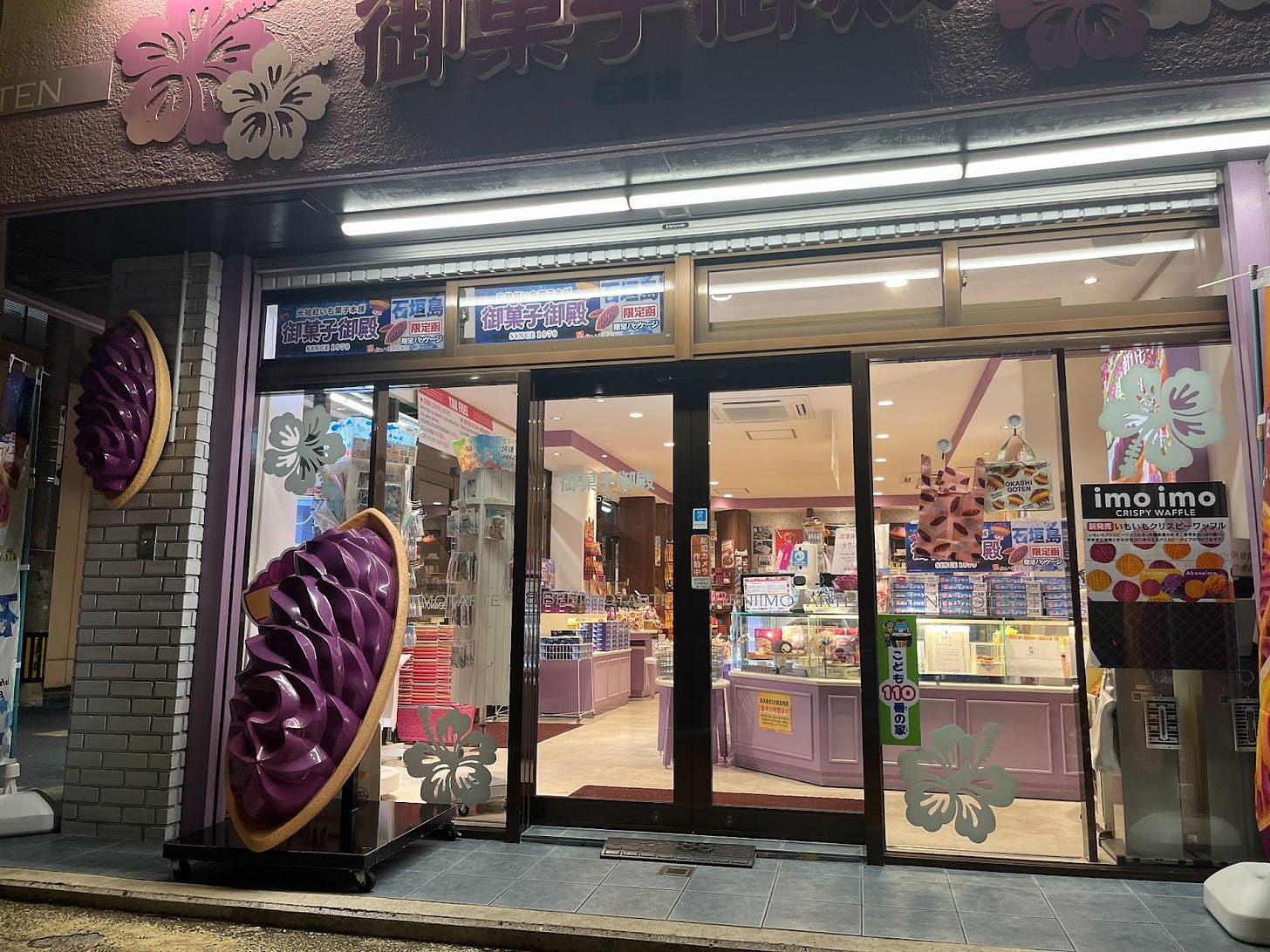
We also took a ferry to nearby Taketomi Island (竹富島), one of the 160+ islands that make up the prefecture of Okinawa. After the 10 minute ride, we were on Taketomi which was significantly more windy and stormy than Ishigaki, just across the bay. We had lunch while waiting for the rainclouds to pass then walked around for a few hours, checking out the low-roofed architectural style and sand roads connecting the island. About 400 people live there, compared to the 50,000 on Ishigaki, and there is famously a water buffalo carriage ride that takes you around to see all of the sights of Taketomi.
Back on Ishigaki, we stopped by Yonekoyaki Sculpture Park (米子焼工房) to see the colorful sculptures of Shisa, a mythological creature from Ryukyu folklore that is half-dog and half-lion. Shisa are usually displayed in pairs at the entrances of buildings, one with its mouth open to ward off evil spirits, the other with its mouth closed to hold the good ones in. The sculptures in the park are each uniquely hand painted and with varying expressions, some human size and some massive and towering over us.
Our last stop before heading to the airport was at a fruit vending machine selling sliced pineapple and mango from Ishigaki. In our excitement, we failed to realize that the vending machine sells the fruit frozen, not fresh at room temperature. I guess that makes sense given that the machine is unmanned, except for a very friendly kitten keeping an eye on things. The kitten hopped into our car before we could all get in, and it took many attempts to get it to stay behind at the shop. Olivia even had to hold it back and then run to catch up to the car while I sped out into the road. Maybe it could sense that I really wanted to take it home with me.
We tried to thaw out the fruit in the sun on the dashboard of the car before arriving at Toyota Rent a Car. It was still halfway frozen (but still delicious!) as we sat eating it with toothpicks on the ground of the airport’s skydeck, which was actually just an outdoor breezeway above the runway, making it a super loud spot to be recapping our trip and having a final laugh together before heading to Osaka and Olivia to Tokyo. A silly way to wrap up a lovely weekend together…
The trip to Okinawa helped me realize how possible weekends away from Osaka are, and how important venturing out of the Osaka bubble is for living a balanced life in Japan and not just focusing on building community in one place, even though that’s important, too. I can often get swept away in the business of Osaka. It feels like there are always so many events, shows, or exhibitions happening, and the list of places marked as ‘want to go’ on my Google Maps app is well into the hundreds. I do feel really lucky to live in a place that offers such an exciting living experience. But, the abundance can lead me to the mindset of fear of missing out on things in Osaka, or on opportunities to deepen friendships and make new ones. A friend and I were talking around New Year’s about how we want to channel JOMO (joy of missing out). Even though it’s kind of silly, I like the idea of JOMO because it releases any pressure that I ‘should’ be anywhere. It shifts my mindset towards one of ‘I am meant to be where I am right now.’ I can’t be missing out on anything, as long as I am presently participating in life at that moment. So, I’d like to have some more weekends away, ‘missing out’ on things in Osaka, but knowing that in return I am exploring a new place where I am meant to be.
I guess that’s all for now! Thanks for reading!!
Xoxo
Miranda


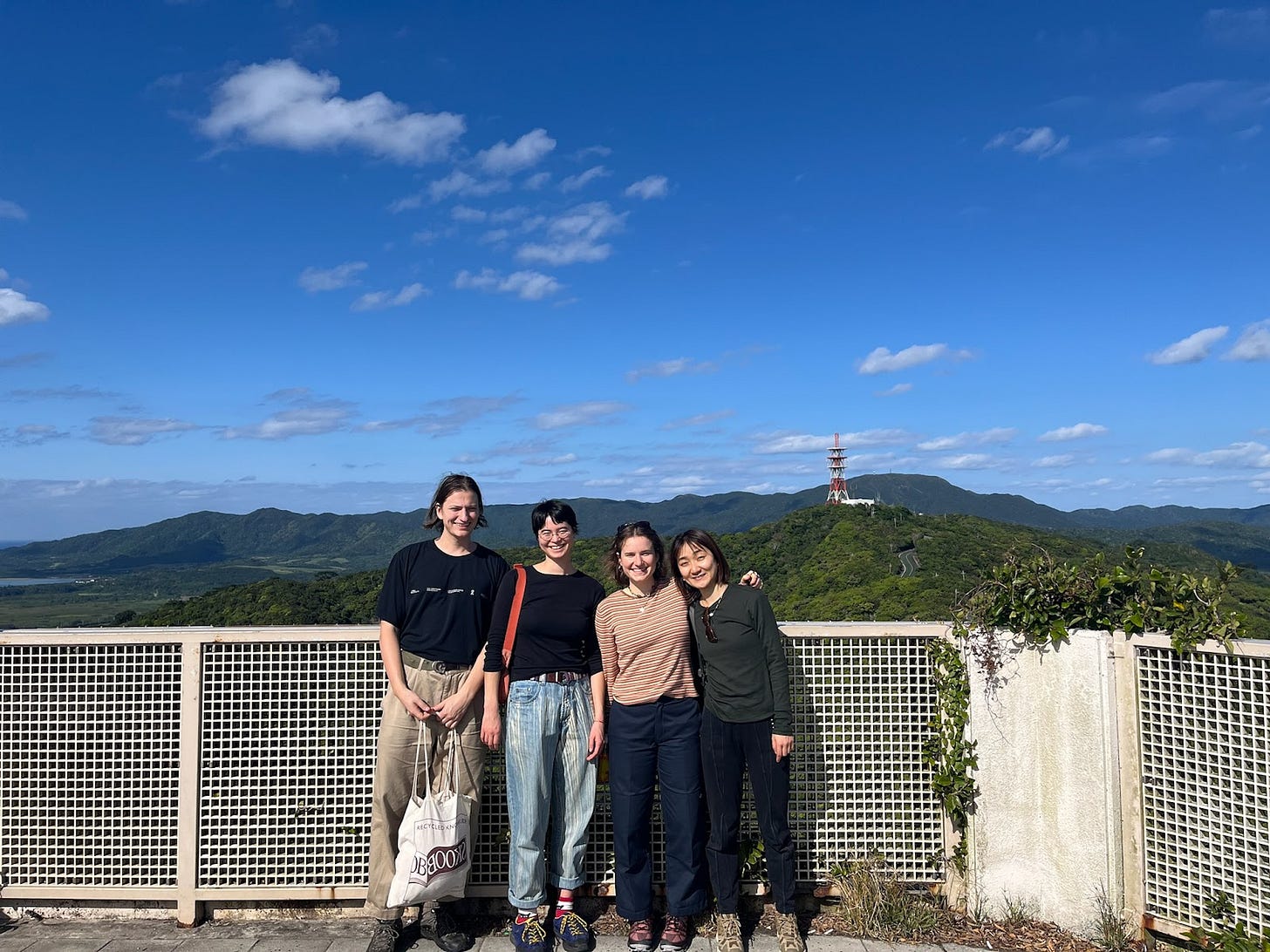
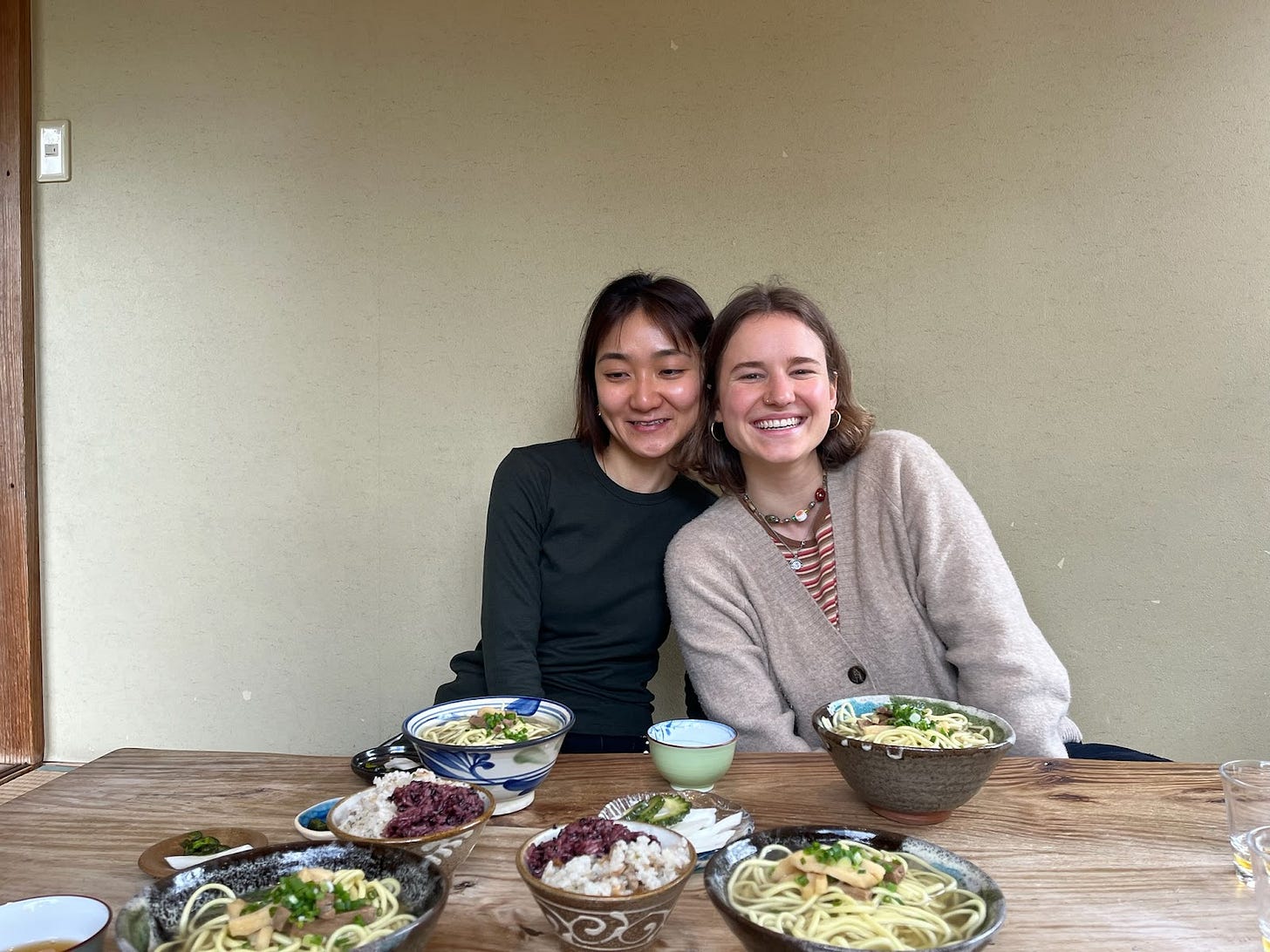
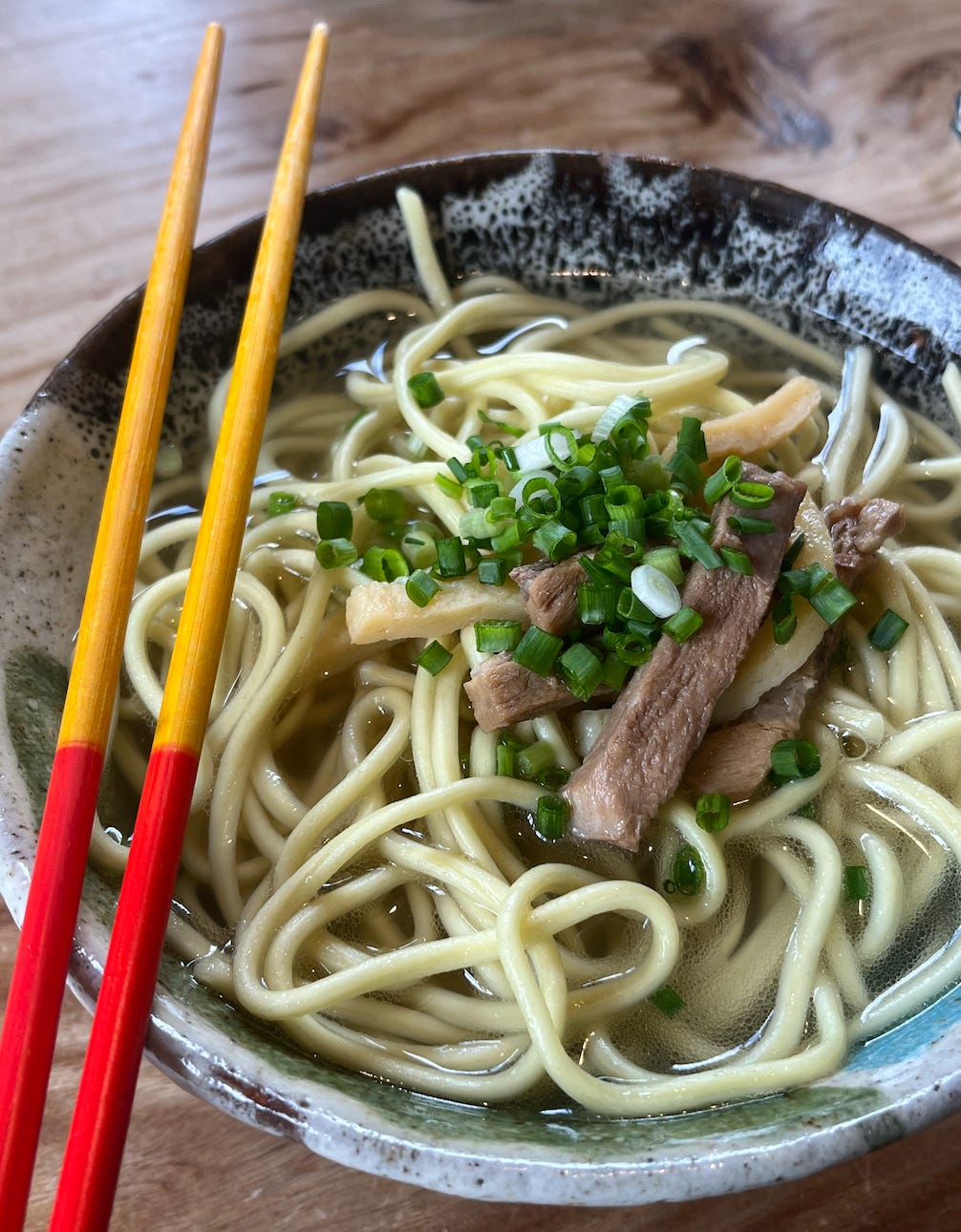
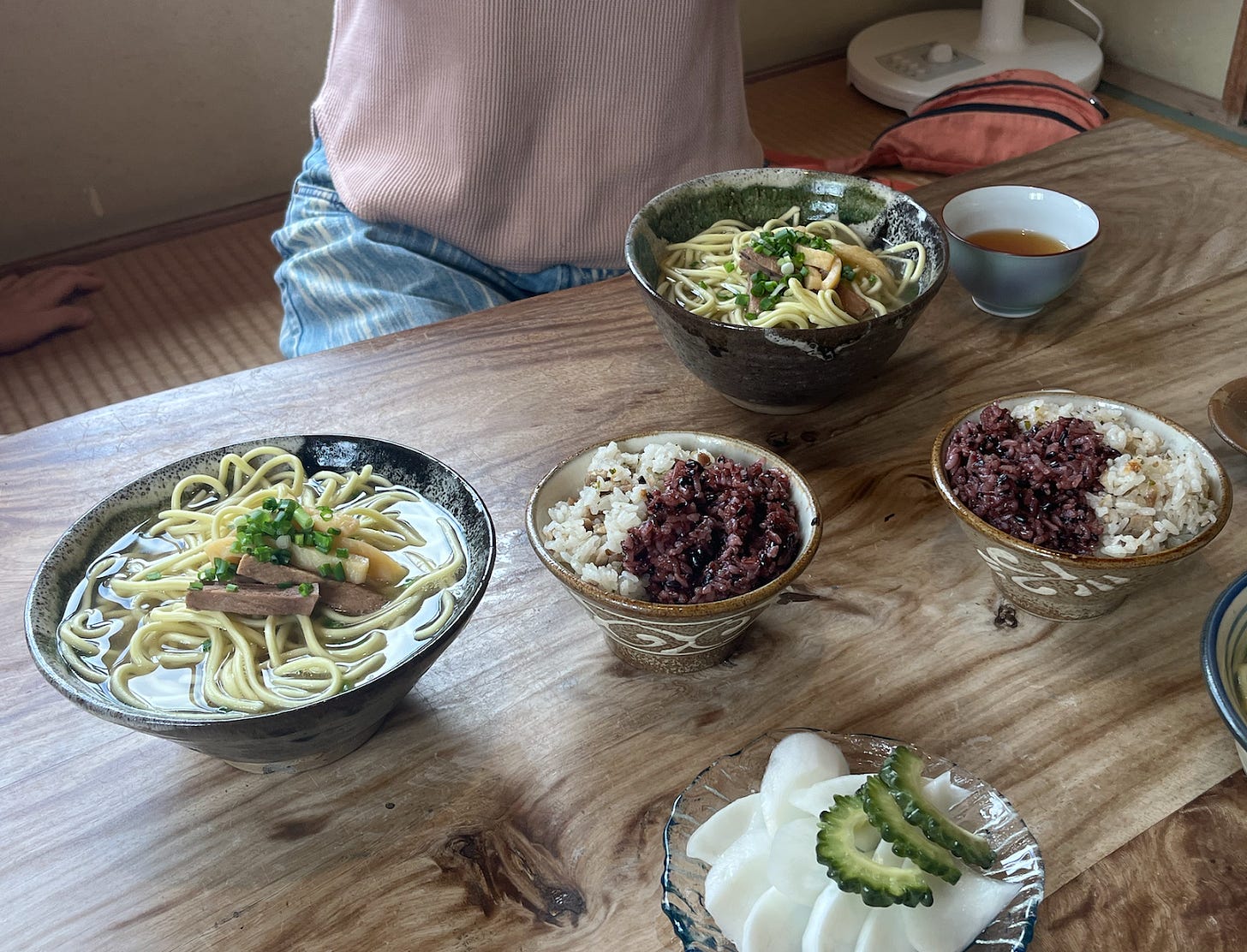
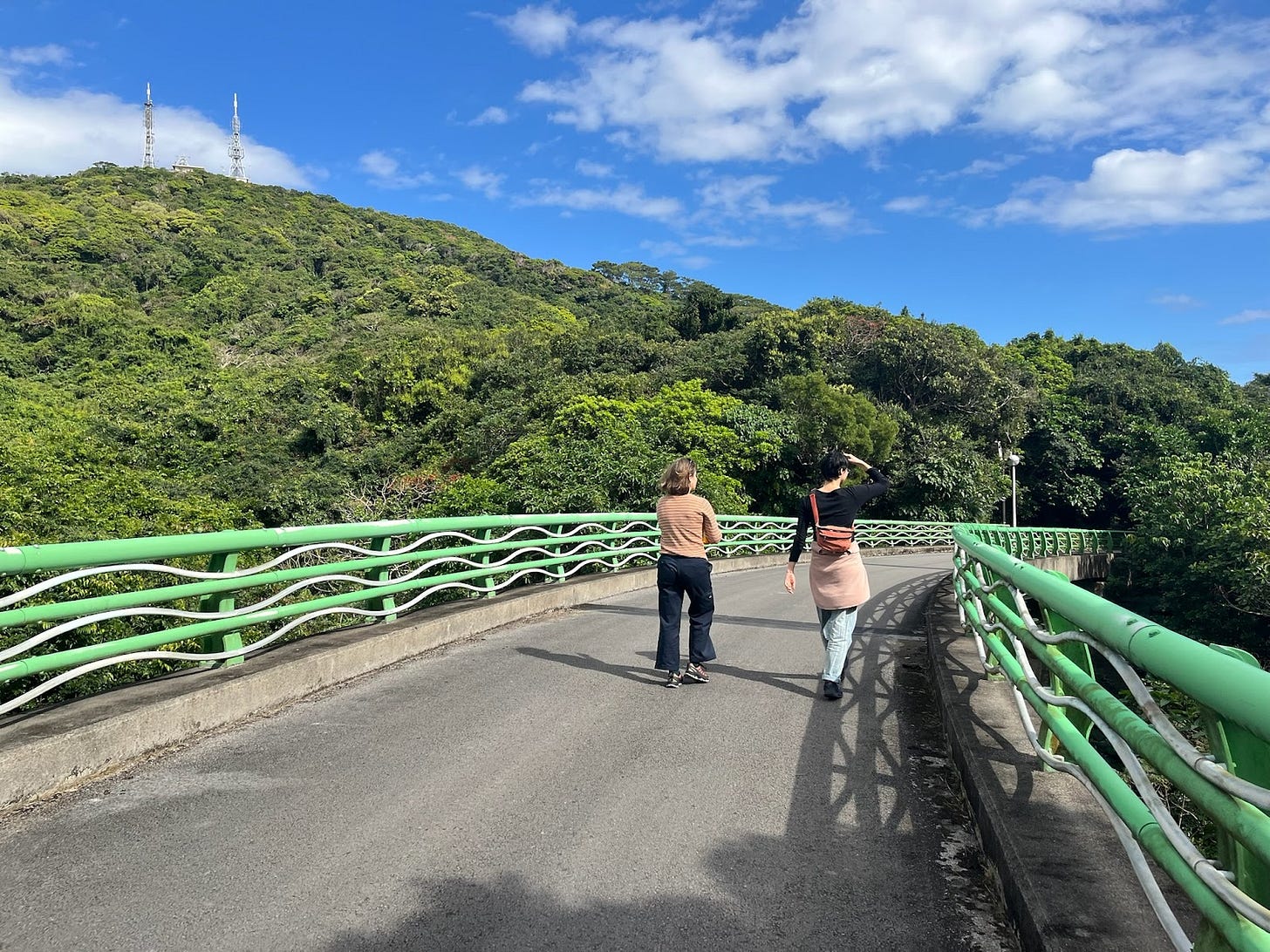
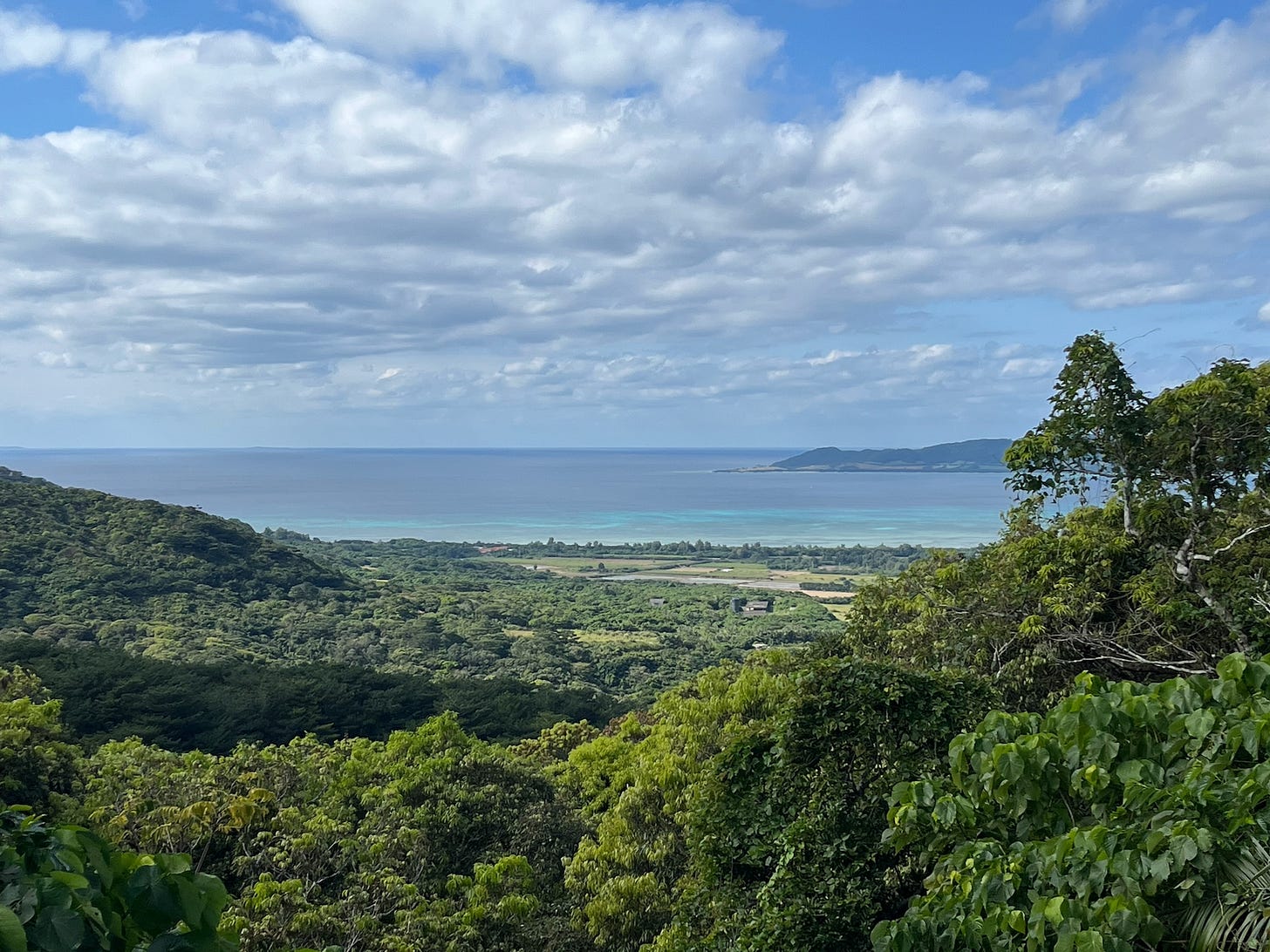
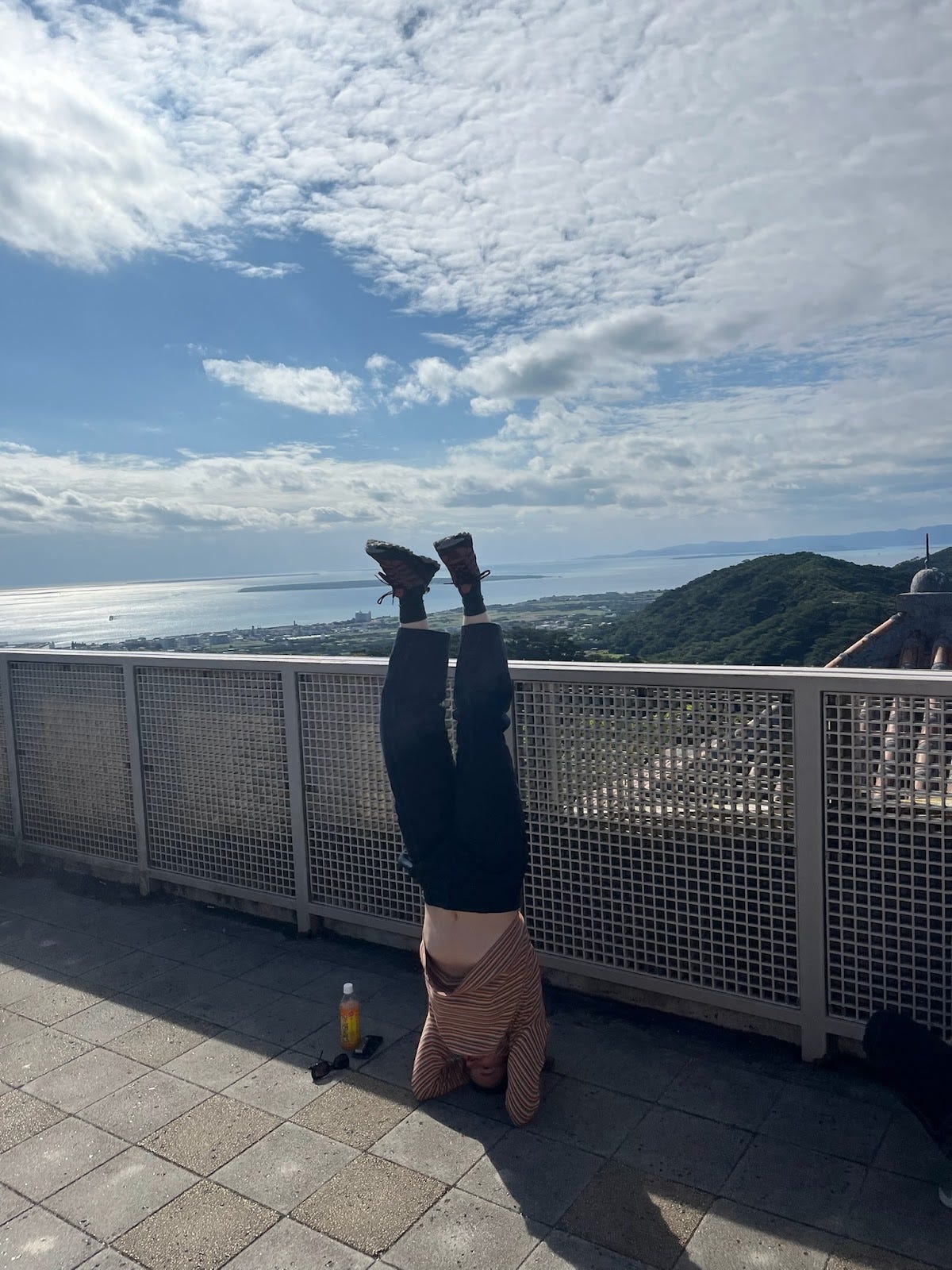
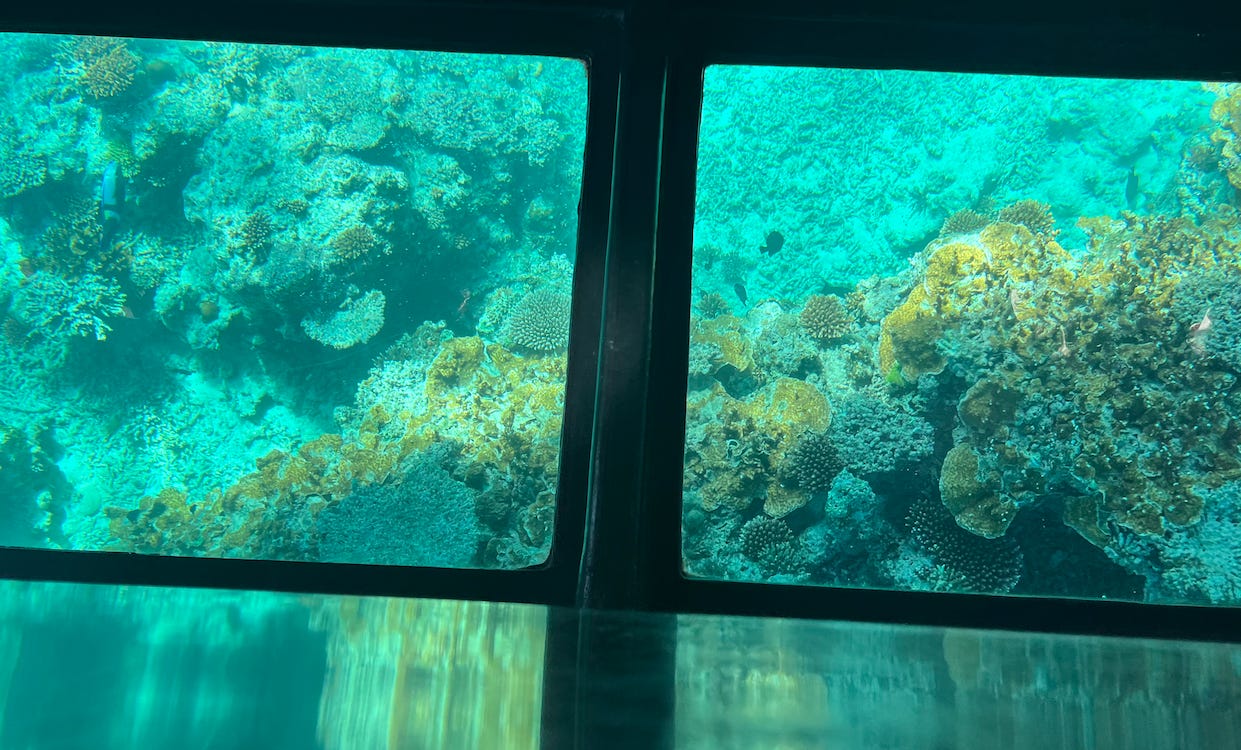
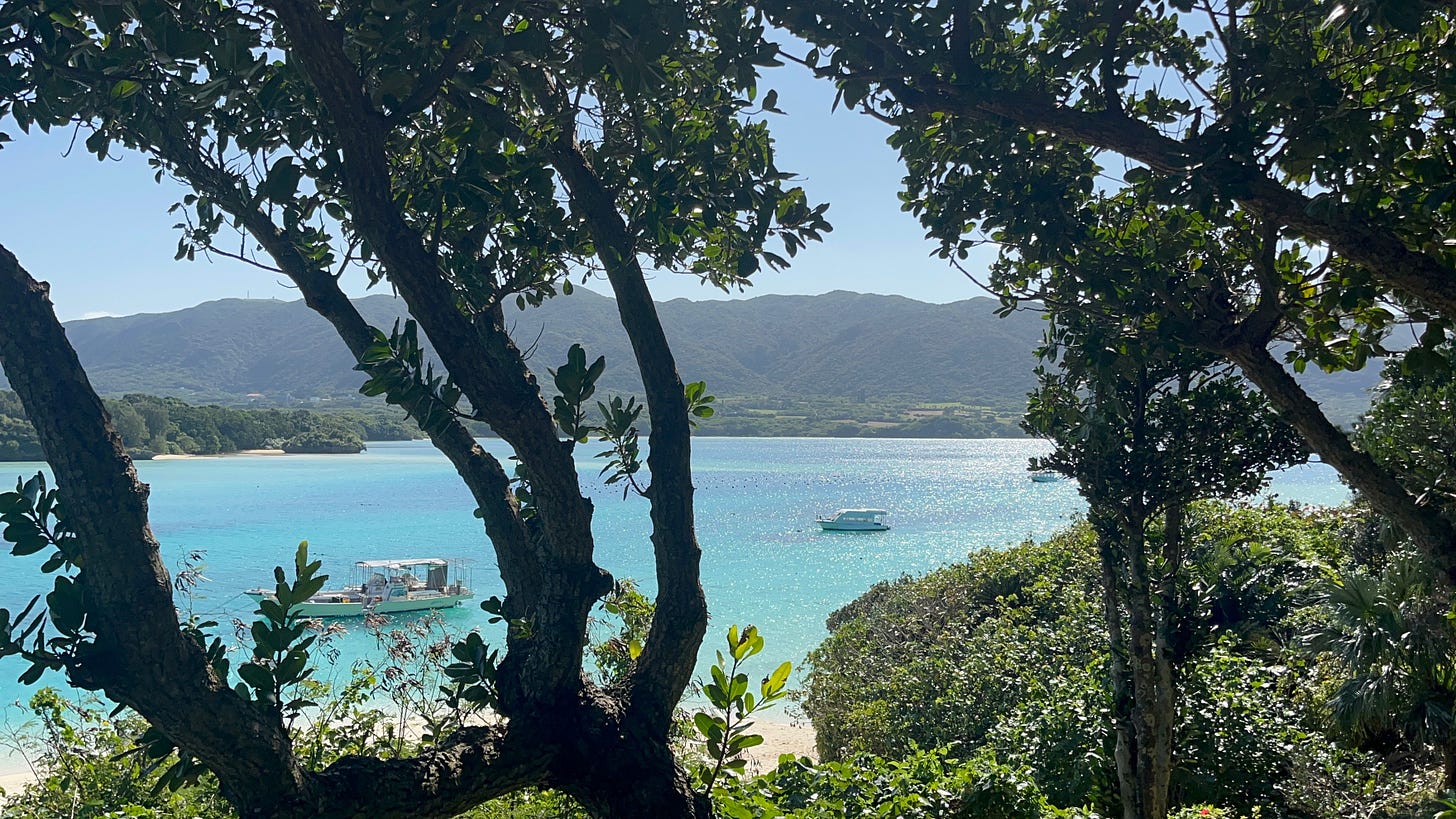
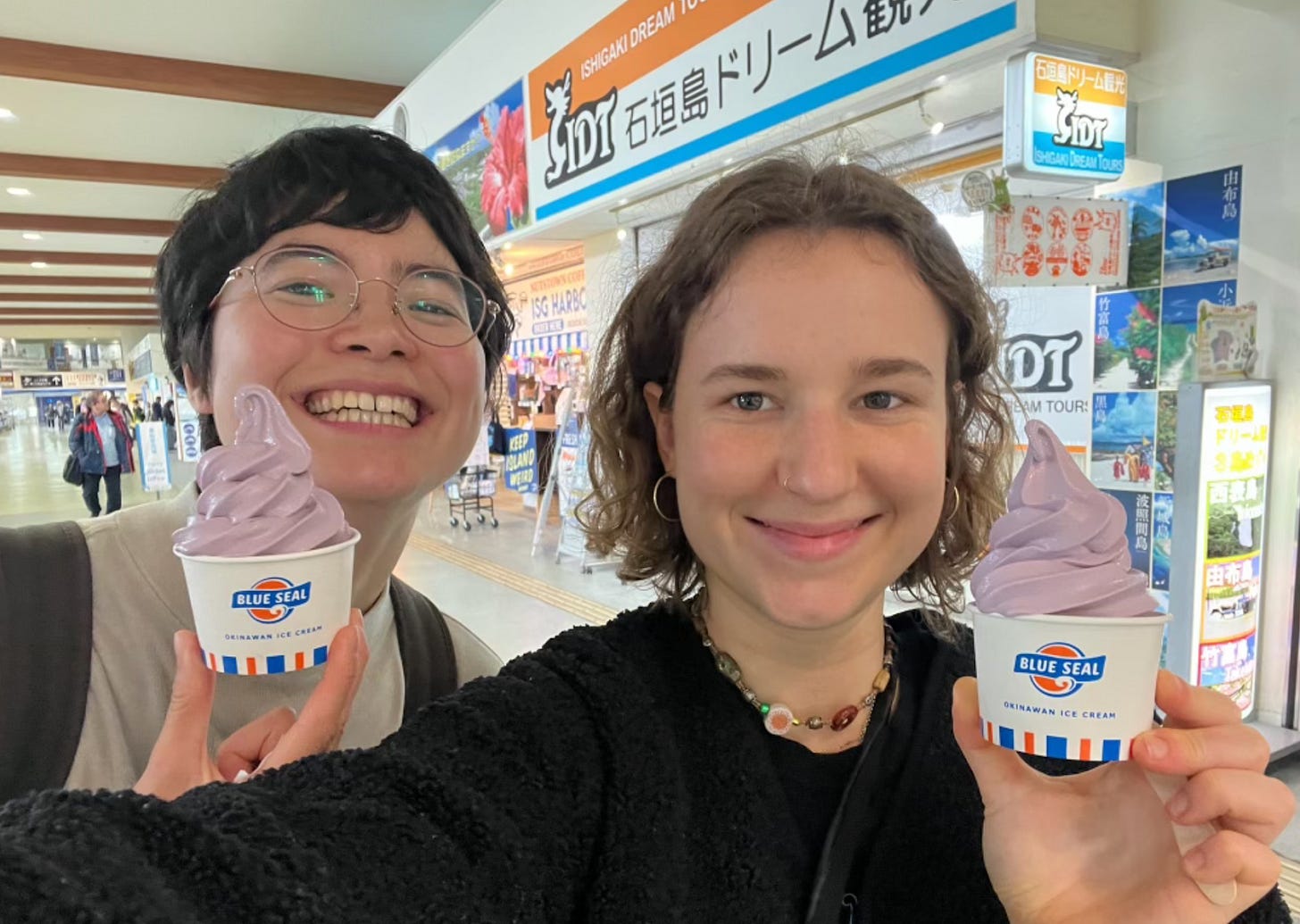
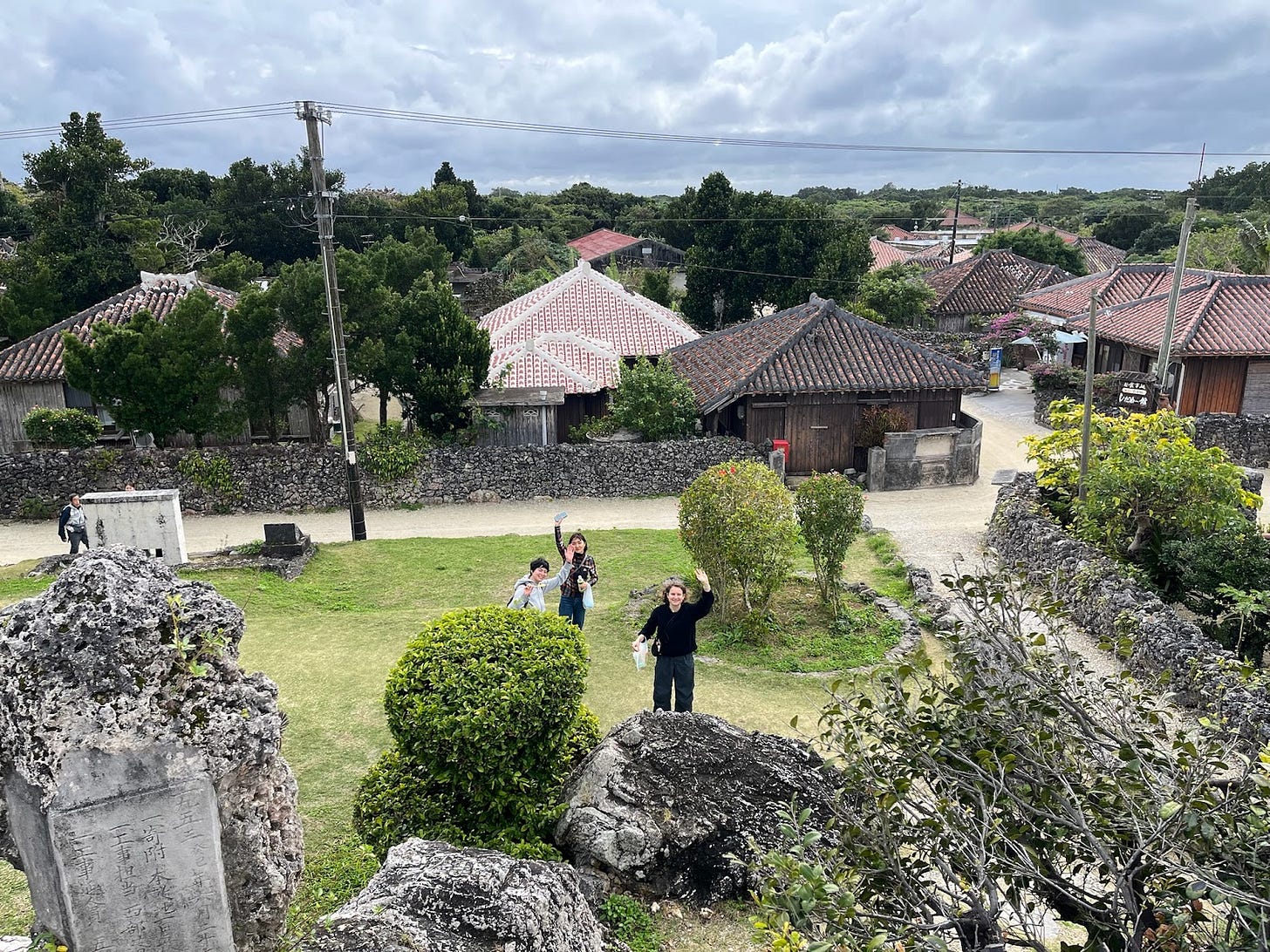
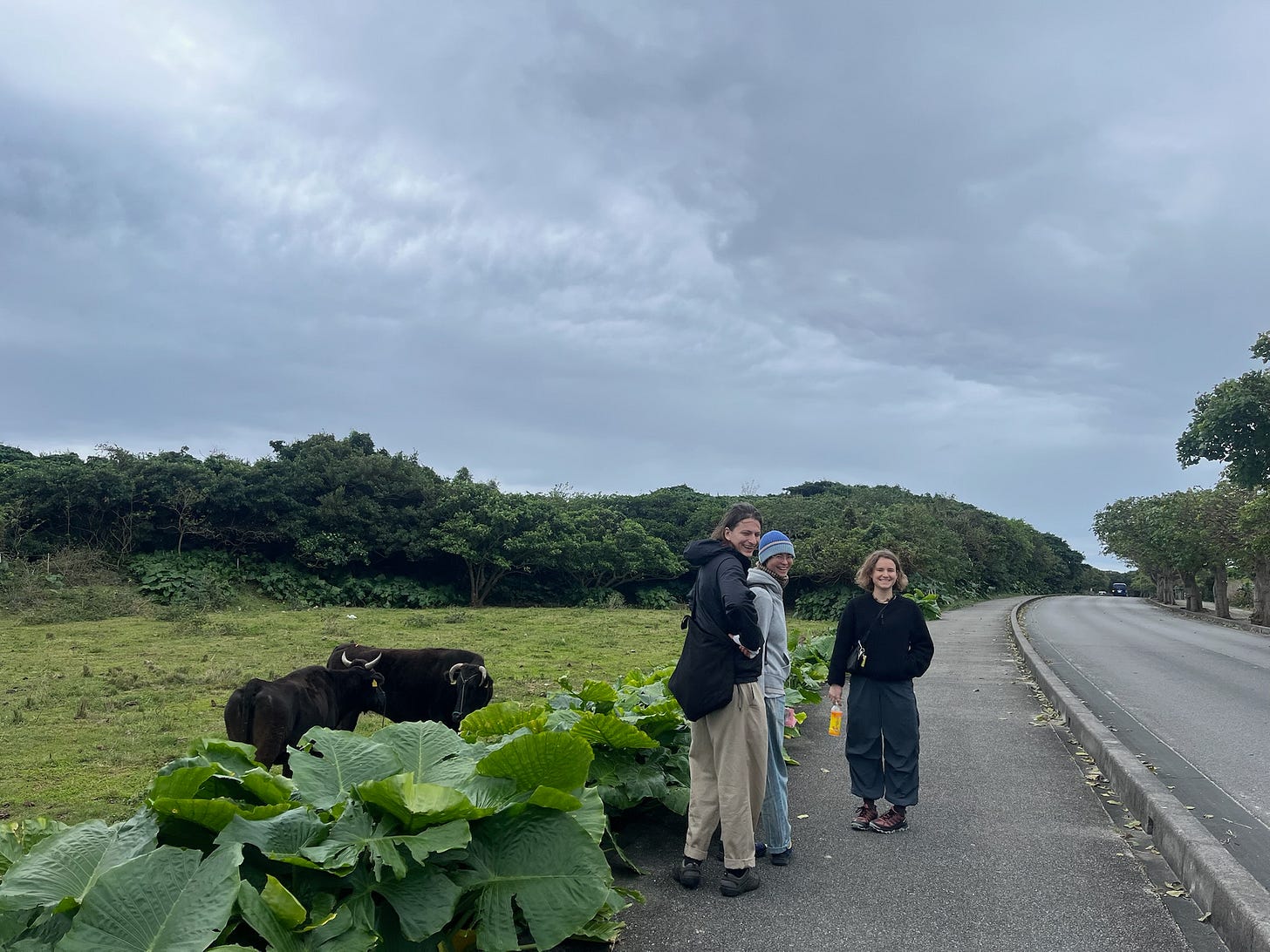
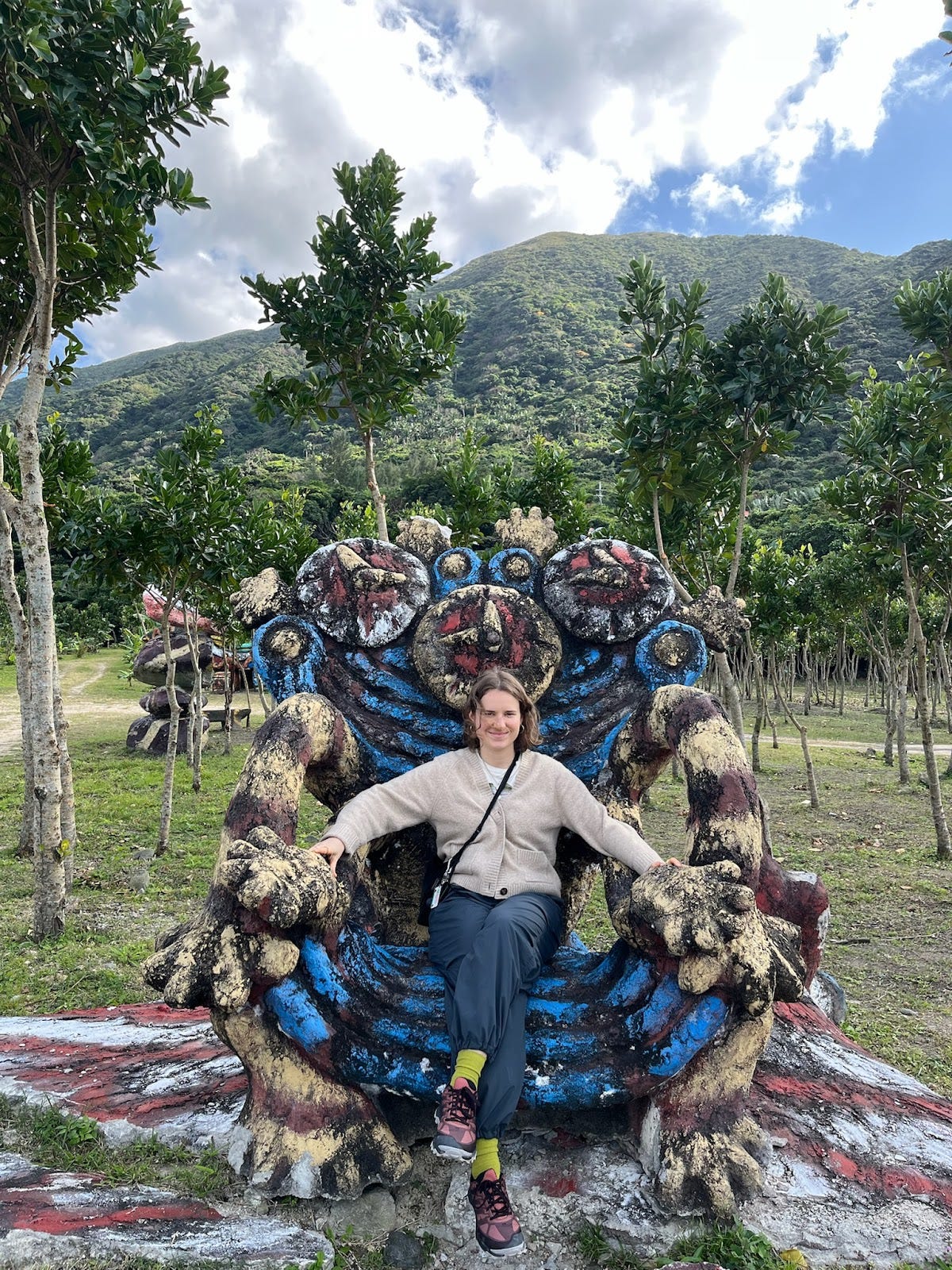
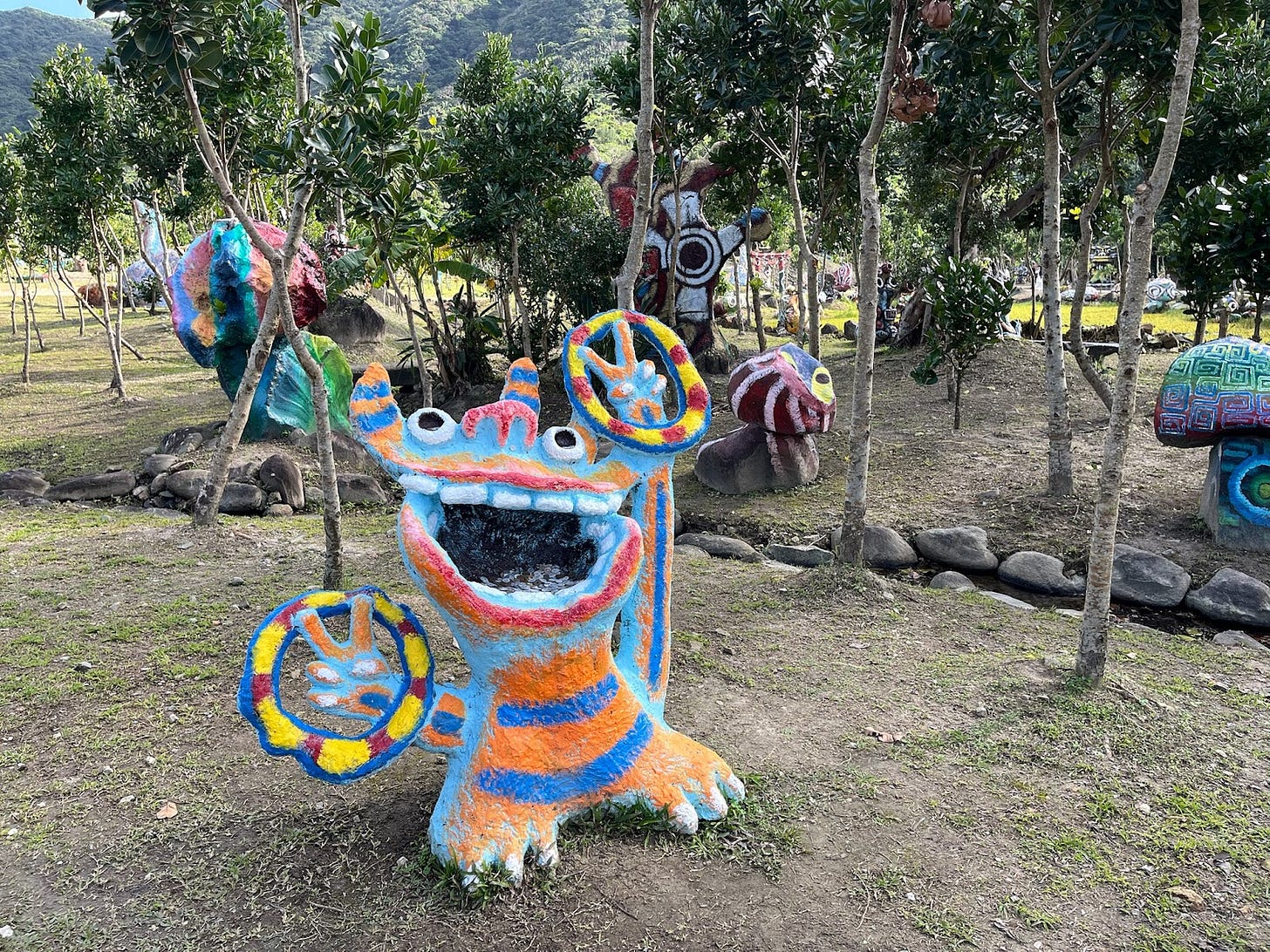
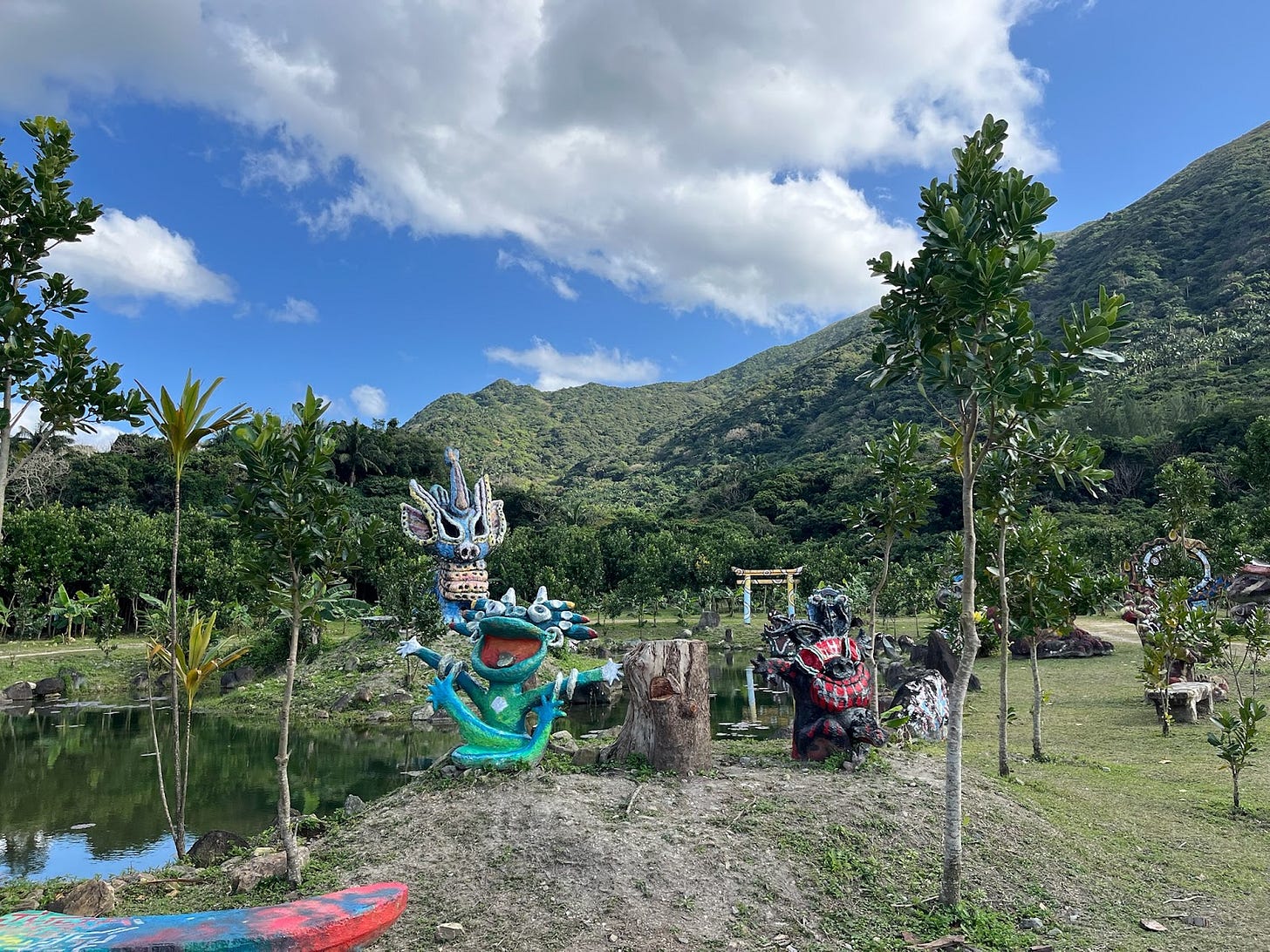
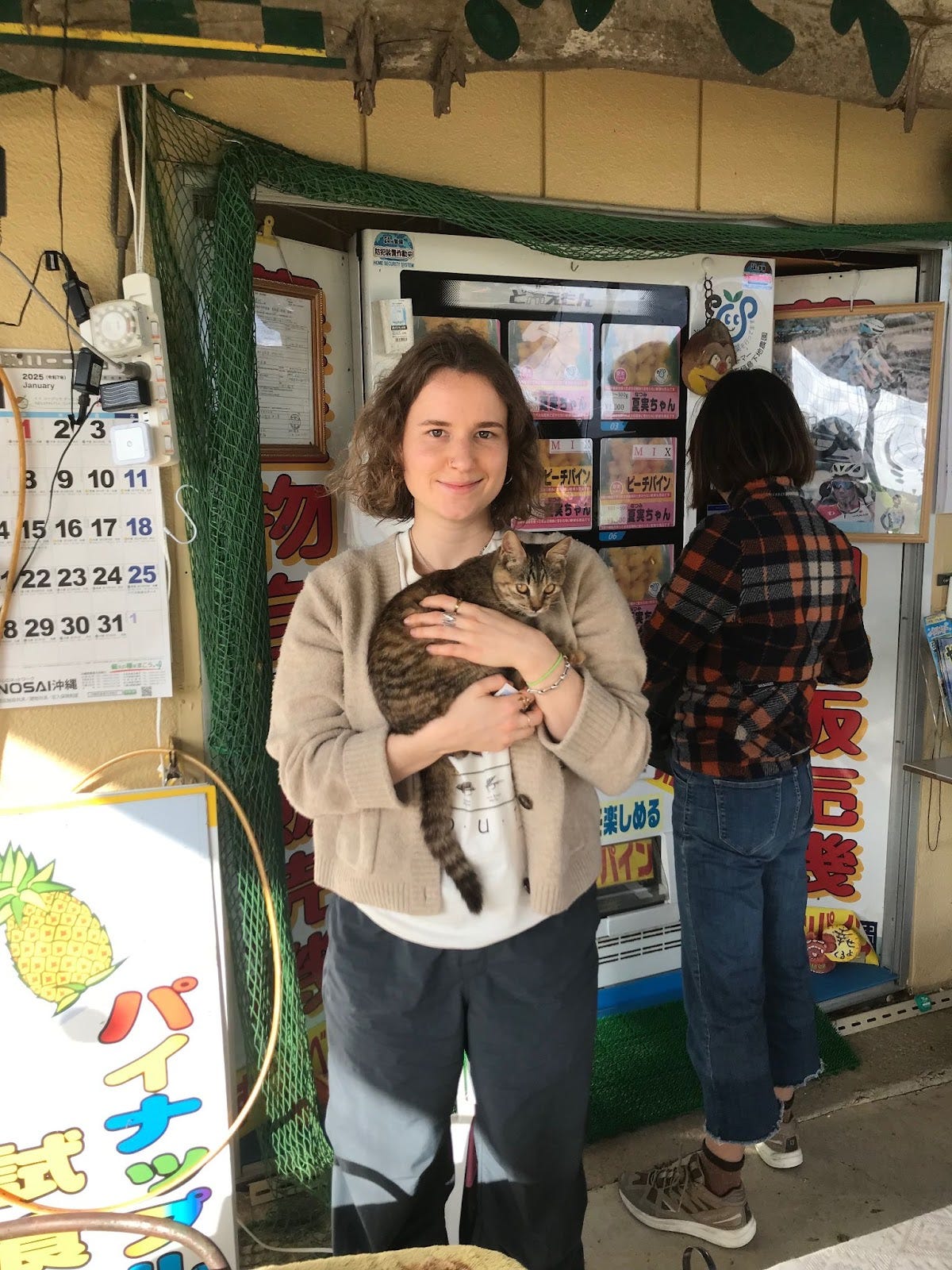
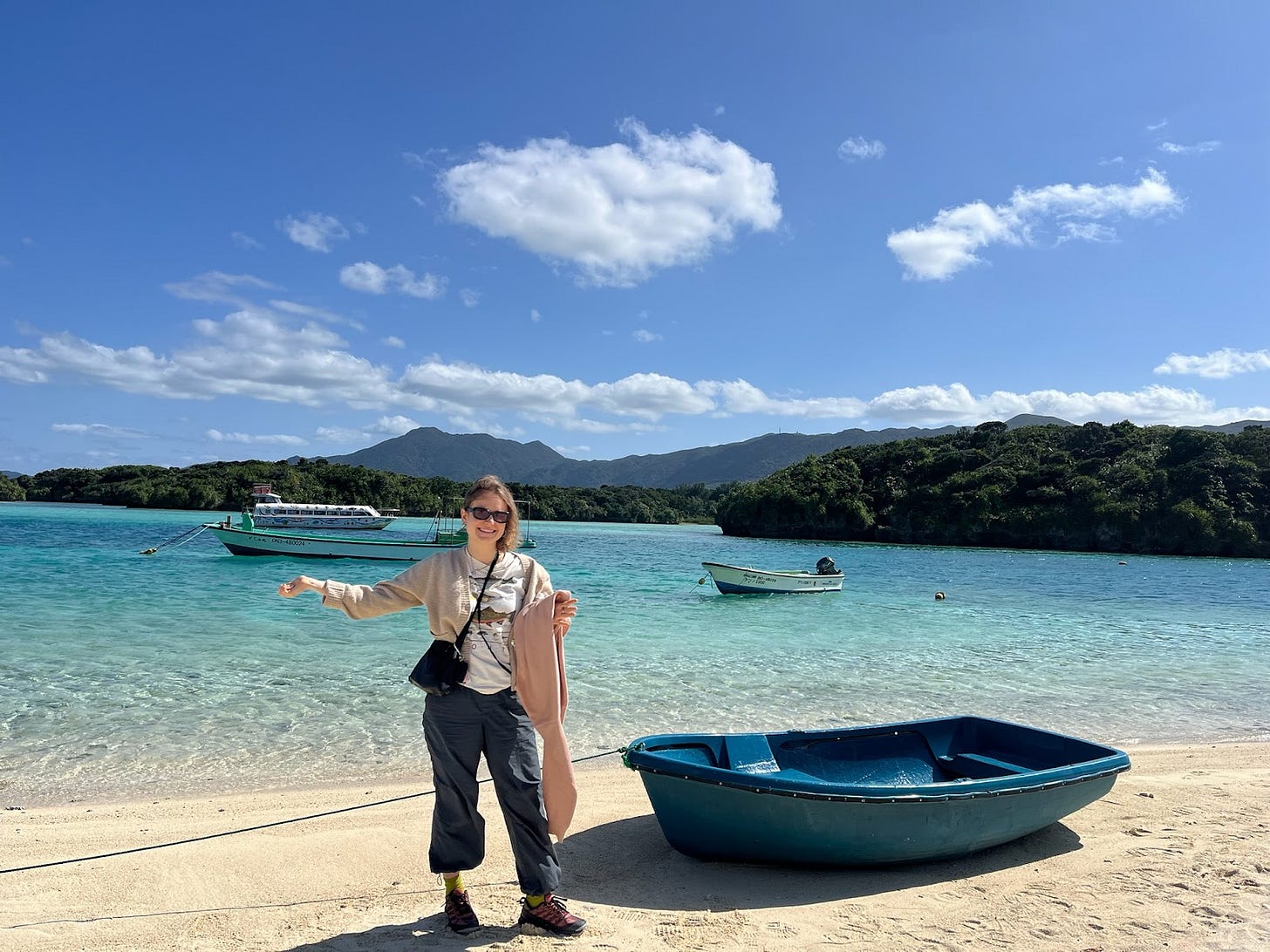
Such a “go with the flow” and laughable trip - but mind- set changing trip.
It is still amazing that we try to live in the moment , but still everything work out.
Planning plus “live in the moment” is a perfect combination.
My lovely memory in the beginning of 2025.
Oh this was a fun one! Looking forward to more 2025 posts 👀